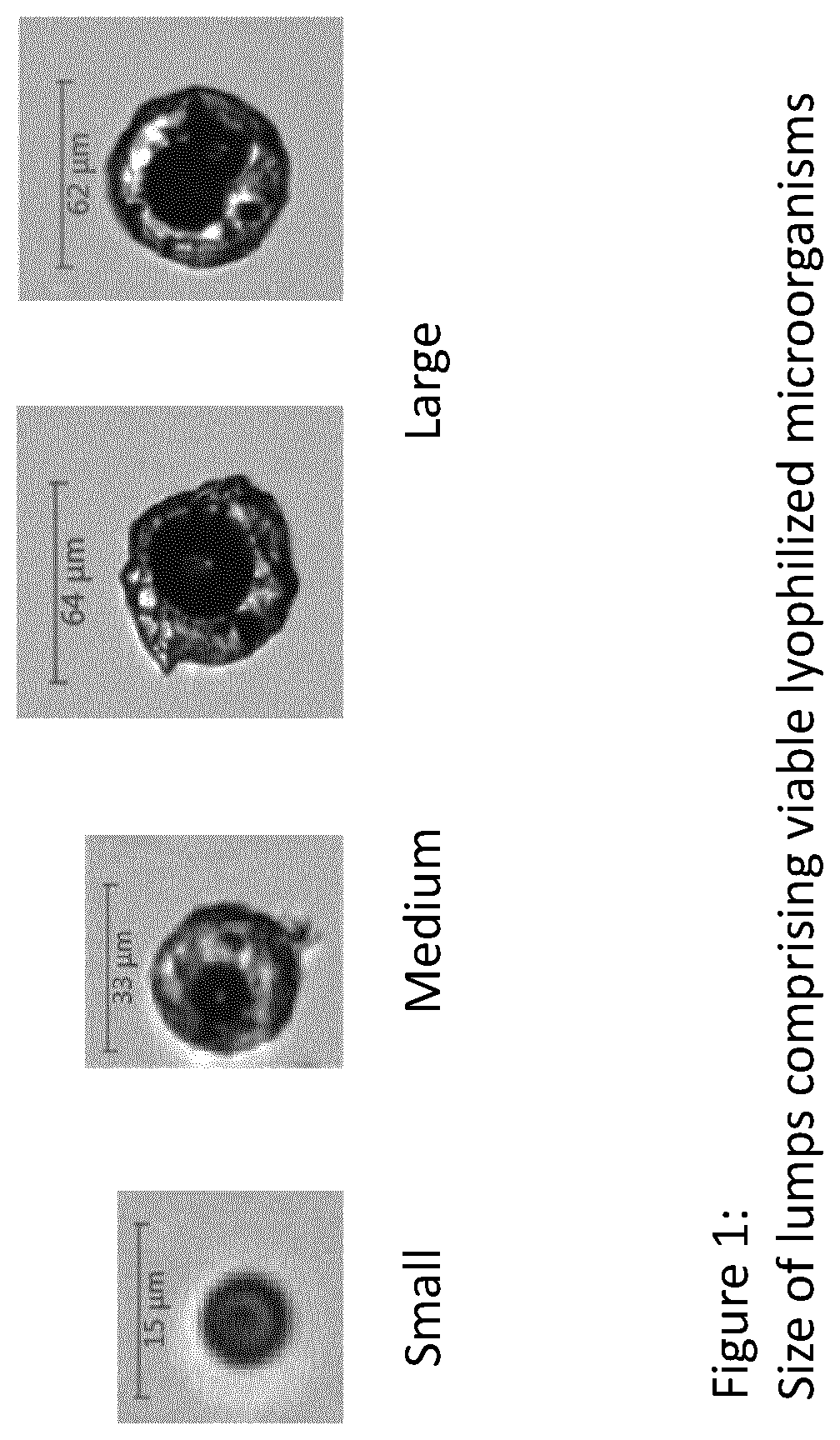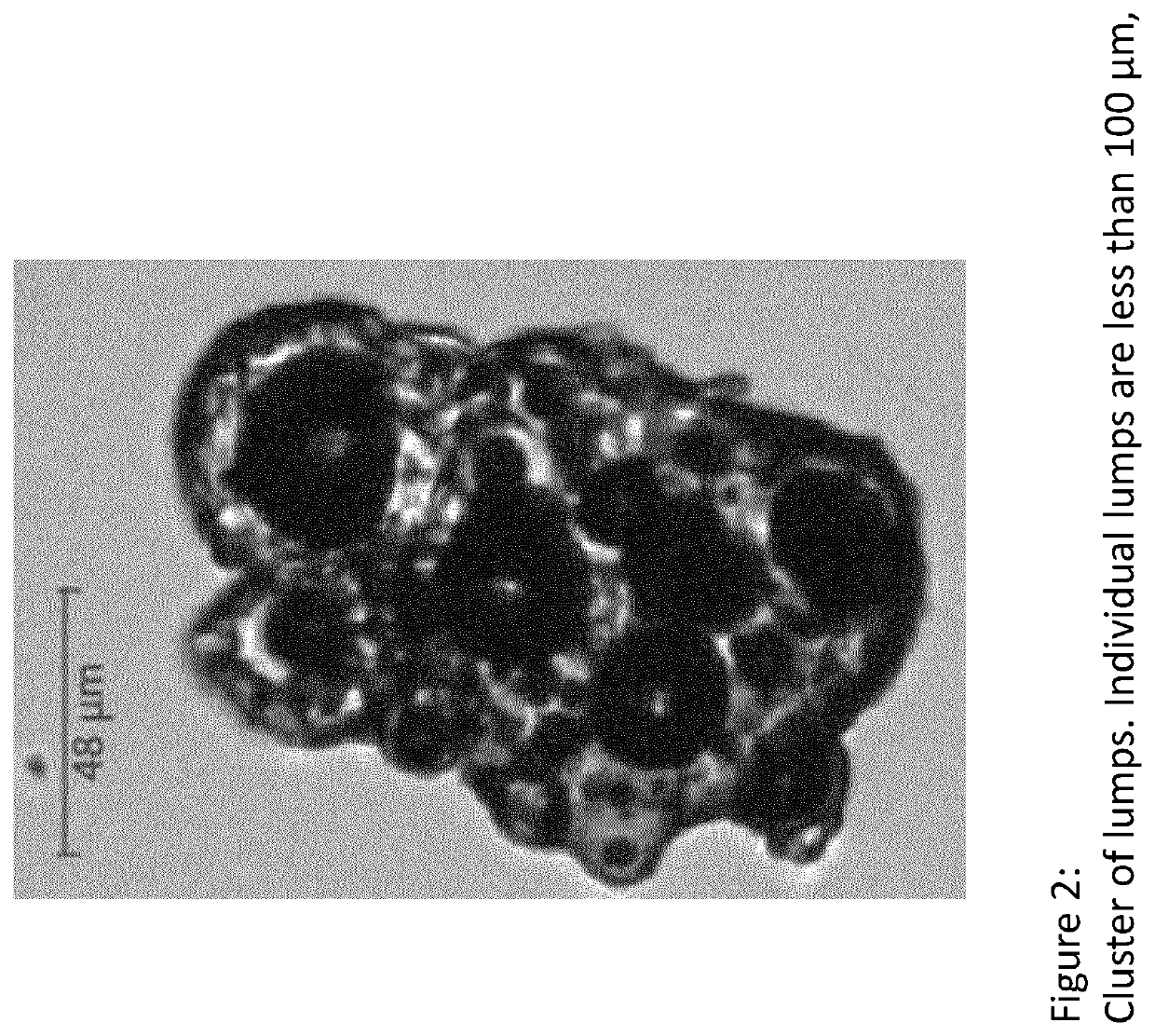Gel composition comprising viable microorganisms
- Summary
- Abstract
- Description
- Claims
- Application Information
AI Technical Summary
Benefits of technology
Problems solved by technology
Method used
Image
Examples
example 1
[0158]Cold pressed organic Jojoba oil (Simmondsia chinensis seed oil) was obtained from Hedenhus, Denmark. Organic refined sweet almond oil was obtained from Nardos Cosmeceuticals and organic sunflower oil (Helianthus annuus seed oil) was obtained from Hedenhus, Denmark.
[0159]Oilkemia 5S polymer was obtained from Lubrizol.
[0160]Lyophilized Lactobacillus rhamnosus LGG was obtained from the commercially available product Culturelle Probiotics Pro-Well, lot 18024CGM15 (DSM). Capsules for oral consumption were broken and the lyophilized viable L. rhamnosus LGG strain were used in the oil gels as a both lyophilized powder as well as the strains were grown on MRS agar plates over night for 24 hours at 37 degrees Celsius and used in the oil as a fresh cultured viable strain.
[0161]Lactobacillus plantarum LB244R (DSM 32996) were grown in MRS broth over night for 24 hours at 37 degrees Celsius and harvested by centrifugation, the cells were lyophilized over night using either skim-milk powder...
example 2
[0169]Oils used for gelling:
[0170]Sample 1: Almond oil
[0171]Sample 2: Borage oil
[0172]Sample 3: Almond sweet oil
[0173]Sample 4: Rose Hip oil
[0174]Sample 5: Jojoba Golden oil
[0175]Sample 6: Camomile oil
[0176]Sample 7: Calendula oil
[0177]Sample 8: Sea buckthorn oil
[0178]Sample 9: Jafflower Evening prim rose oil
[0179]Sample 10: Sesame oil
[0180]Oilkemia 5S polymer was obtained from Lubrizol
[0181]EstoGel M was obtained from PolymerExpert
[0182]Oil gels were produced following the procedure:
[0183]Step 1: heating the oil with one of the polymers until solubilization
[0184]Step 2: stirring the oil-polymer mixture while cooling to room temperature
[0185]Step 3: adding lyophilized LB244R.
[0186]The two polymers were used in the concentrations: 0.1%, 1% and 5% w / w.
[0187]The oil gels have different viscosity depending on oil and the concentration of polymer, most of the oil gels with 5% w / w polymers are solid or partly solid oil gels.
[0188]The viability of lyophilized LB244R in the oil gels were de...
example 3
[0189]Example 2 were performed using same procedure for making an oil gel. In this experiment two strains Leuconostoc mesenteroides LB349R (DSM 33093) and Weissella viridens LB10G (DSM32906) were grown in MRS broth over night for 24 hours at 37 degrees Celsius and harvested by centrifugation, the cells were lyophilized overnight.
[0190]For both strains a significant stability was obtained, thus 100% viability was maintained after 2 weeks storage of the oil gels at 37 degrees Celsius.
PUM
| Property | Measurement | Unit |
|---|---|---|
| Temperature | aaaaa | aaaaa |
| Length | aaaaa | aaaaa |
| Size | aaaaa | aaaaa |
Abstract
Description
Claims
Application Information
 Login to View More
Login to View More - R&D
- Intellectual Property
- Life Sciences
- Materials
- Tech Scout
- Unparalleled Data Quality
- Higher Quality Content
- 60% Fewer Hallucinations
Browse by: Latest US Patents, China's latest patents, Technical Efficacy Thesaurus, Application Domain, Technology Topic, Popular Technical Reports.
© 2025 PatSnap. All rights reserved.Legal|Privacy policy|Modern Slavery Act Transparency Statement|Sitemap|About US| Contact US: help@patsnap.com


